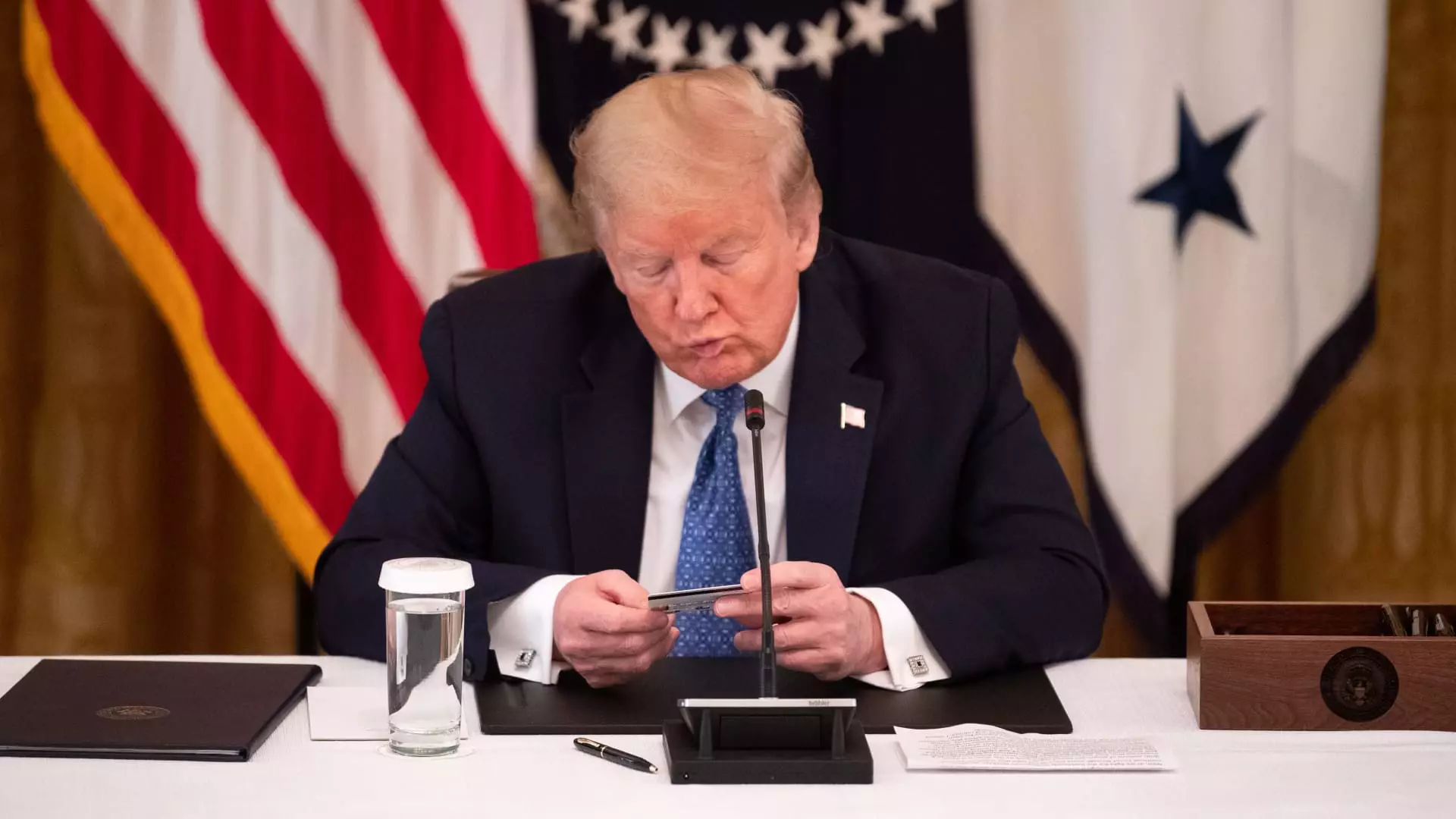The much-anticipated launch of World Liberty Financial (WLF), a cryptocurrency endeavor backed by Donald Trump and his family, has encountered significant obstacles. As the digital currency scene buzzes with a mix of caution and intrigue, the performance of WLF’s initial token sale reflects challenges that may impact both investor confidence and Trump’s broader political aspirations ahead of the impending election.
The launch day was marred by considerable technical issues as users faced regular outages on the WLF website. The technical glitches prevented many interested investors from participating in the token sale, leading to a frustrating experience. Despite claims from co-founder Zachary Folkman that over 100,000 individuals were prepared to invest, only approximately 4,300 unique wallet addresses managed to secure tokens by Tuesday afternoon. This statistic indicates a concerning uptake rate, with only around 4% of potential investors engaging with the platform.
These outages signal a deeper issue, reflecting poor readiness and potentially outdated infrastructure within the project. Collectively, these experiences foster distrust and hesitation among investors, particularly amid the volatile crypto environment where reliability is paramount for user engagement.
The sales figures emerging from WLF’s launch are underwhelming. Despite announcing the sale of over 532 million tokens priced at 15 cents each—a mere fraction of the 20 billion tokens allocated for public distribution—the response from the market has been lackluster. Such poor performance is particularly alarming as it suggests a disconnect between the project’s promise and its execution. With less than 3% of tokens sold during the launch, the project’s viability is thrown into question.
Additionally, the reliance on a regulatory framework, highlighted by the use of Regulation D token offerings, places a burden on the scalability of WLF; it restricts participation to accredited investors, thereby significantly narrowing its potential market. As the crypto world becomes increasingly competitive, ensuring broad accessibility is crucial for any project’s success, especially one emerging from the high-profile realm of Trump.
Trump’s involvement in WLF is seen as an extension of his brand into the rapidly evolving crypto sector, with promotional efforts referring to the project as “The DeFiant Ones,” a nod to the decentralized finance movement. However, the complications surrounding WLF’s launch represent a setback not only for the financial initiative but also for Trump himself, particularly with the presidential election looming.
Failure to establish a successful venture could tarnish Trump’s reputation among a demographic skewed toward innovation and entrepreneurship in finance. Investors may perceive this abortive start as indicative of broader managerial deficiencies, especially when considering the high-stakes environment of digital assets.
While there are aspirations for WLF to evolve into a fully operational crypto bank, the project at its current stage is shrouded in uncertainty. The absence of a detailed white paper and formal business plan raises red flags for potential investors who seek transparency and accountability. Furthermore, without a clear structure or defined roadmap, the proposition remains vague and open to speculation, making it challenging for stakeholders to envision its future.
The recent move by WLF to seek approval from the DeFi platform Aave signals an effort to align itself with established practices within the crypto space. However, the overall skepticism surrounding the project emphasizes the necessity for WLF to clarify its objectives, bolster technical infrastructure, and build credibility with a broader audience.
The launch of World Liberty Financial embodies a tumultuous start that may well affect both its market standing and Trump’s political brand. The convergence of technical malfunctions, underwhelming sales metrics, and a lack of clarity regarding the project’s future creates a precarious landscape. For WLF to gain traction, significant improvements must be made in operational efficiency, transparency, and strategic direction. Otherwise, this crypto initiative risks being relegated to the realm of missed opportunities, reflecting poorly on its high-profile leadership.

